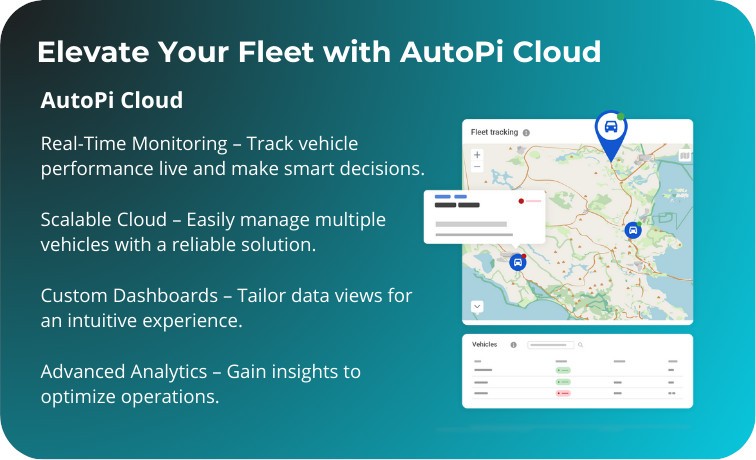Is your key fob failing you when you need it most? It’s a common frustration for many car owners.
Key fobs are indispensable for a range of car operations, from locking doors to remotely starting the engine. However, like any electronic device, they can lose signal or malfunction. Reprogramming your key fob is an effective way to re-establish its connection with your vehicle’s technology. Key fobs communicate with your car’s internal systems, processing data through protocols like the CAN bus.
In this guide, we will walk you through the straightforward steps to reprogram your key fob, ensuring it remains a reliable part of your car experience. Let’s begin and get your key fob working like new.
Get Your Own Keyfob
Step-by-Step Guide: How to Program Your Key Fob
Step 1: Gather Your Materials
Before starting the programming process, ensure you have all the necessary items within reach. Typically, you will need:
- Your key fob that needs reprogramming.
- Your vehicle’s owner’s manual – this is crucial as specific steps can vary by car model.
- A spare key, if you have one. This can sometimes be required or helpful in the process.
Having these items prepared will make the process smoother and prevent any unnecessary delays.
Step 2: Get Inside Your Car
This might seem obvious, but it’s essential to be inside your vehicle when programming the key fob. This proximity ensures optimal signal transmission between the key fob and your car’s onboard system.
Step 3: Insert the Key into the Ignition
Place your car key into the ignition. Turn the key to the ‘On’ position. Crucially, do not start the engine. The ‘On’ position activates your vehicle’s electrical systems and prepares it for the key fob programming sequence.
Step 4: Turn the Key to the ‘On’ Position (If Not Already There)
If you have just inserted the key, you’re likely already in the correct position. If not, make sure to turn the key to the point right before the engine engages to start. This is the correct position to initiate the programming mode for your key fob.
Step 5: Press the Lock Button on Your Key Fob
Locate the lock button on your key fob. Press it firmly and hold it down for approximately five seconds. This action sends a signal to your vehicle’s electronic control unit, signaling that you are starting the key fob programming sequence.
Step 6: Turn the Key to the ‘Off’ Position
Now, turn the ignition key back to the ‘Off’ position. Depending on your car model, this step might need to be repeated multiple times. Consult your vehicle owner’s manual to find the exact number of cycles required for your specific make and model.
Step 7: Repeat the Process If Necessary
Repeat Steps 4 through 6 as needed, following the specific programming instructions for your vehicle. Each car manufacturer and model may have a different number of cycles or slightly different procedures required to successfully program a key fob. Always refer to your owner’s manual for the most accurate guidance.
Step 8: Test Your Key Fob
Once you have completed the required steps and cycles, it’s time to test if your key fob has been successfully programmed. Try the key fob functions: locking and unlocking your car doors. If your car has remote start capability, test that as well. If the key fob doesn’t work on the first attempt, carefully repeat the programming steps. If you are still having trouble, check your owner’s manual again for troubleshooting tips or consider seeking professional assistance.
What Else Can Your Vehicle’s Data Do?
Now that you’ve successfully connected your key fob to your car through reprogramming, you might be curious about the broader capabilities of your vehicle’s technology. Modern cars are sophisticated systems on wheels, filled with interconnected networks that constantly communicate. Your key fob is just one part of this complex system, interacting with your car’s network to perform actions like locking doors and starting the engine.
But the functionality extends much further. Your vehicle’s network holds a wealth of data, including:
- Performance metrics, such as speed, RPM, and fuel consumption.
- Diagnostic data, which can indicate potential issues before they become major problems.
- Maintenance alerts, reminding you of scheduled services.
- Custom settings that personalize your driving experience.
Accessing this data is no longer limited to car mechanics. Tools like automotive data loggers empower you to tap into this valuable information. Whether you are a car enthusiast, a software developer working on automotive applications, or managing a fleet of vehicles, access to this data can provide significant benefits and insights.
If you found reprogramming your key fob empowering, imagine the potential of accessing your car’s full data. Data loggers provide a direct interface with your vehicle’s CAN bus systems, allowing you to:
- Monitor your car’s performance in real-time.
- Record and analyze raw vehicle data for deeper understanding.
- Develop custom integrations and applications for your vehicle.
Intrigued? Check out data loggers here and discover how you can unlock the full potential of your car’s data.
 Close up of the AutoPi Cloud interface showcasing vehicle data and analytics Discover Now!
Close up of the AutoPi Cloud interface showcasing vehicle data and analytics Discover Now!
Upgrade to a Keyless Car Experience
Have you considered upgrading to a keyless car experience? Imagine the convenience of unlocking and starting your car without ever needing to take your key fob out of your pocket or bag. It’s more accessible than you might think, and we can guide you on how to achieve this upgrade.
Upgrading to keyless entry involves synchronizing a compatible key fob with your car’s system – a process that shares similarities with how diagnostic tools connect to retrieve vehicle data for detailed analysis.
Watch our latest YouTube video (linked below) where we delve into the world of keyless entry systems. You’ll see just how straightforward it can be to enhance your car with this modern technology.
FAQs About Programming Car Key Fobs
Through years of experience in automotive technology, we’ve addressed numerous key fob related issues. From this extensive experience, we’ve compiled a list of the most frequently asked questions from customers attempting key fob programming themselves. Our answers are based on decades of automotive expertise, aimed at providing clear, practical, and helpful information.
Here are some common queries we encounter:
How to program a car key without the original key fob?
Programming a replacement key fob without an original can be more complex, but it’s often possible. Some vehicles offer onboard programming procedures that are detailed in the owner’s manual. If your car supports this, you can program a new fob using specific sequences. If onboard programming is not an option, you will likely need to visit a professional locksmith or dealership who has specialized equipment to program the new key fob to your vehicle.
Can you program a key fob without going to the dealership?
Yes, in many cases, key fobs can be programmed at home by following the instructions in your vehicle’s owner’s manual. This is often a convenient and cost-saving alternative to dealership programming. However, for more advanced vehicle security systems or newer car models, professional programming may still be required.
Can I reprogram a key fob to a different car?
Generally, no. A key fob is specifically paired with the electronic system of the vehicle it was originally programmed for. Reprogramming a key fob to function with a different car is typically not possible because key fobs and car systems are designed to communicate in a unique, vehicle-specific manner.
How do I find my key fob code?
The key fob code, if required for programming, is usually found in your vehicle’s owner’s manual or can be obtained from the car dealership. For security reasons, it is crucial to keep this code confidential and only share it with certified automotive professionals if necessary.
Conclusion
Programming your key fob doesn’t need to be an overwhelming task. With the step-by-step guide provided, we hope you feel more confident in connecting your key fob to your car yourself.
If you are interested in learning more about how vehicles utilize data for enhanced security and performance, explore our comprehensive guide to automotive data loggers.
Eager to delve deeper into your car’s data systems? Learn more here.
[
